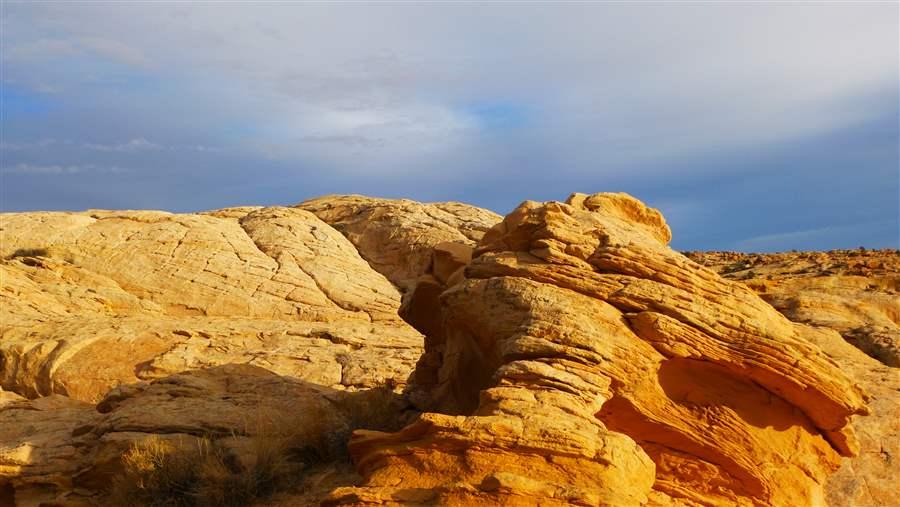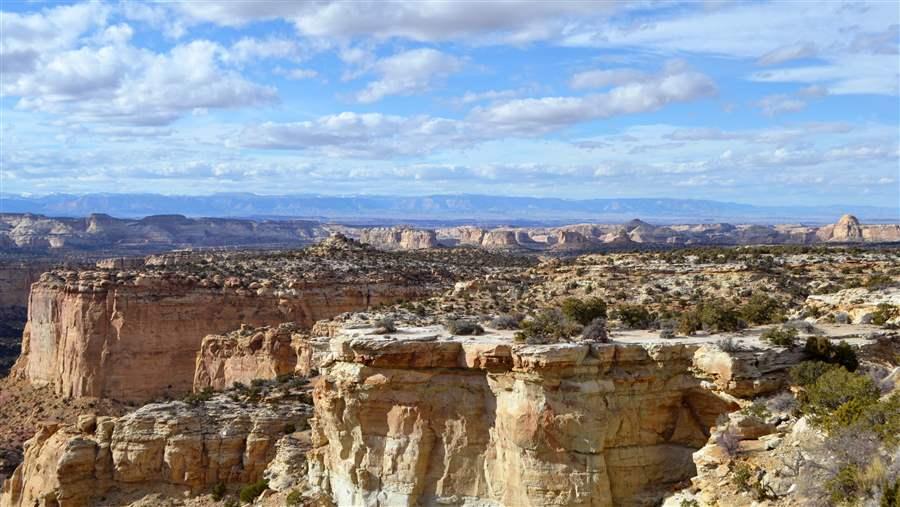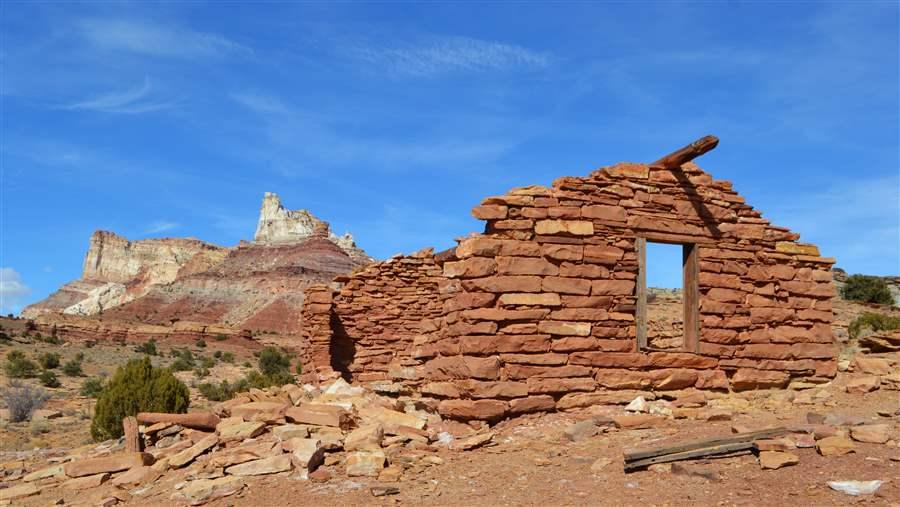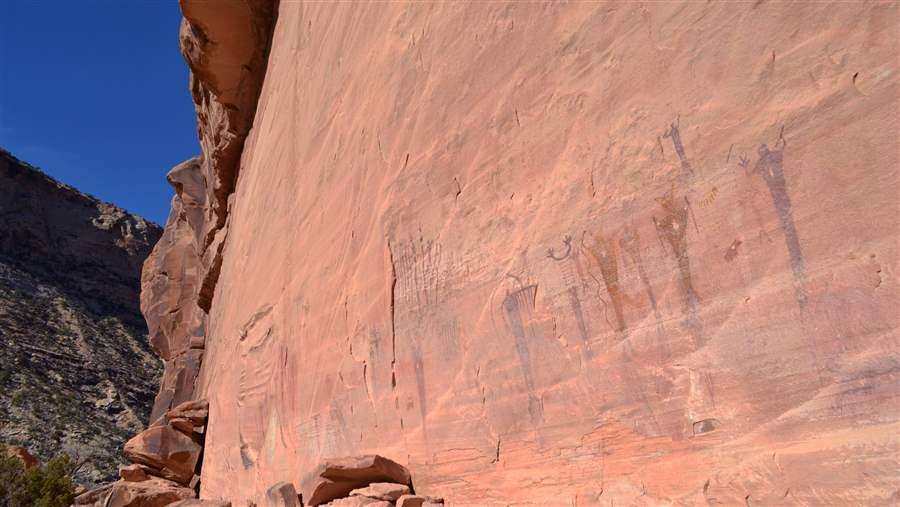Bill Would Protect Outdoor Recreation Haven in Utah
Scenery and cultural history of Emery County draw a wide range of users to public land

The Crack Canyon Wilderness Study Area (above) includes colorful badlands of cliffs, caves, and arches.
The Pew Charitable TrustsThis article was updated on June 20, 2018, to include Rep. Colleen Hanabusa as a co-sponsor.
The evolution of Emery County, Utah, into a world-class outdoor recreation destination may not have started 150 million years ago, when the landscape teemed with Jurassic-era giants, but the raw material for the transformation was in place. Wind and water shaped the area’s slot canyons, hoodoos, buttes, and streambeds over millennia, leaving behind a sandstone canvass in which archaic and pre-Columbian cultures etched their pictographs and petroglyphs. The Utes occupied the area for over 1,000 years, and were followed by miners, ranchers, Mormon settlers, and others drawn by the promise of open land.
Today, people are attracted to Emery County to mountain bike, paddle, hike, and camp, and a bill introduced May 9 in Congress aims to ensure that they will always have space to do all those things. The Emery County Public Land Management Act (S. 2809/H.R. 5727), introduced by Utah Senator Orrin Hatch (R) and Representatives John Curtis (R) and Colleen Hanabusa (D), would preserve nearly 1 million acres of the county’s most spectacular federally managed lands while sustaining local economic development. The legislation is the culmination of 23 years of negotiation involving a diverse group of stakeholders on how to manage these public lands.

The Emery County Public Land Management Act would add more than a half-million acres to the state’s existing 1.1 million acres of wilderness.
The Pew Charitable TrustsAbout 530,000 acres of land would be permanently protected as wilderness, including the saw-toothed formations of the San Rafael Reef, the winding sandstone canyons of Sid’s Mountain (named for one of the county’s early ranchers, whose cabin rests in a meadow frequented by Utah’s largest herd of bighorn sheep), and the mesas of Muddy Creek, which offer perhaps the most remote backcountry experience in Utah. The bill would also safeguard about 173,000 acres of Desolation Canyon, where the Green River has cut deep canyons over time. Desolation Canyon is the largest Wilderness Study Area (WSA) overseen by the Bureau of Land Management (BLM) in the lower 48 states.

People in Emery County have been working together for 23 years to preserve the area’s natural, historical, and cultural history for future generations. Support came from outdoor enthusiasts, water advocates, local elected officials, and other community members.
The Pew Charitable TrustsThe bill would protect 54 miles of the Green River, which includes outstanding sections of whitewater, by adding it to the National Wild and Scenic Rivers System. It also would authorize an agreement under the Recreation and Public Purposes Act to expand Utah’s popular Goblin Valley State Park, home to hundreds of sandstone hoodoos.
The bill also establishes a 337,000-acre National Conservation Area (NCA) in the San Rafael Swell that would be off limits to new mining and new road construction, and would conserve and enhance the many resources of the region—from recreational, cultural, and historical sites to wildlife habitat and natural and scenic areas—including the historic Lucky Strike uranium mine and similar sites.
In addition, the bill would encourage scientific study by establishing the 2,500-acre Jurassic National Monument, which would protect one of the greatest concentrations of Jurassic-era dinosaur bones in the world.

Petroglyphs can be found throughout the landscape, preserving evidence of cultures from thousands of years ago.
The Pew Charitable TrustsThough deeply rooted in the past, this bill would also serve as a model for the future. It is locally driven and drafted using language reflecting that of other successful conservation legislation, such as a 2009 bill covering Washington County, Utah. Passing this bill would help ensure the ongoing integrity of the National Wilderness Preservation System, our country’s conservation gold standard.
The Pew Charitable Trusts will continue to work with stakeholders to seek several needed improvements to the bill, which shows that Utah officials see long-term value in protecting the natural, cultural, and historic resources of Emery County.
John Gilroy is a director and Anders Reynolds is an officer with The Pew Charitable Trusts’ U.S. public lands program.












